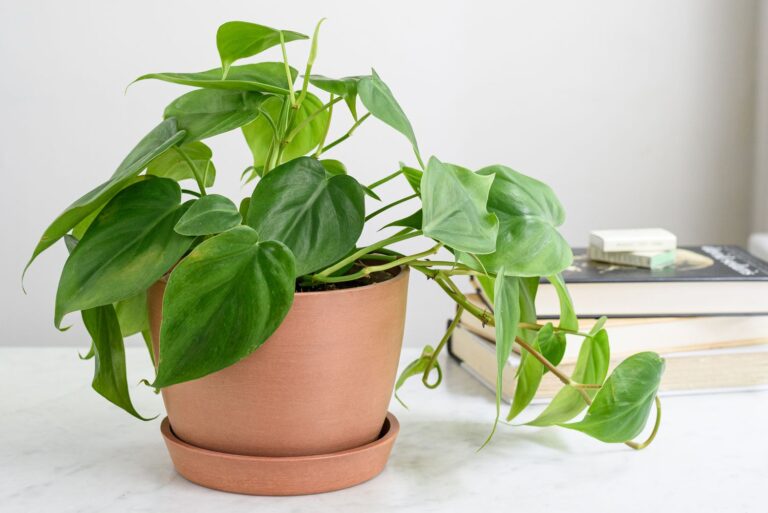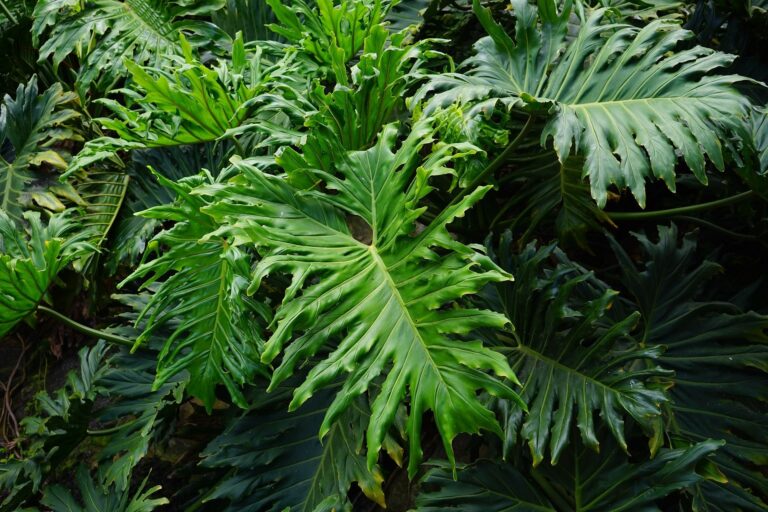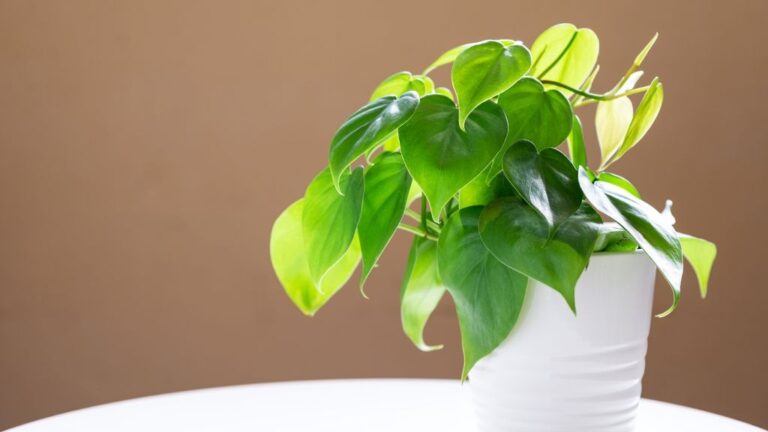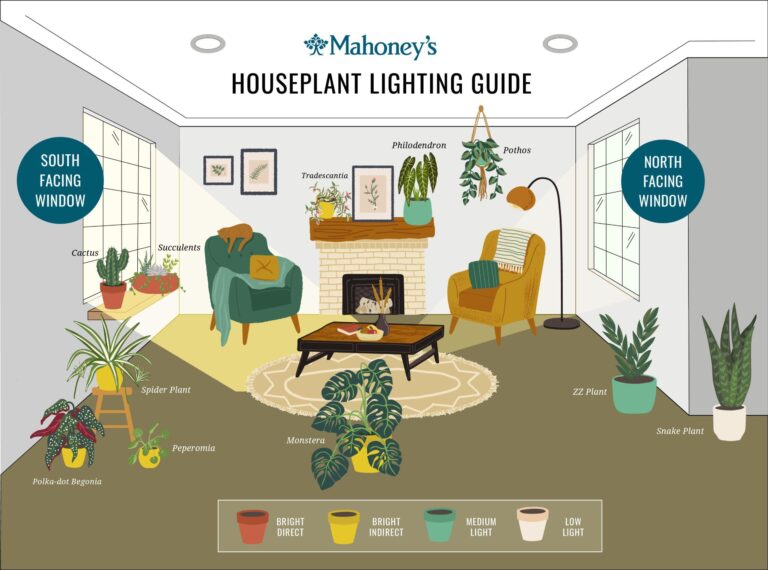Philodendron History: From Ancient Rainforests to Modern Homes
87% of houseplant enthusiasts can’t explain why their philodendrons climb walls—but the answer lies buried in 30 million years of evolutionary perfection that transformed ancient rainforest survivors into the world’s most adaptable indoor plants.
The heart-shaped leaves that climb your living room wall become more than decorative greenery—they represent thirty million years of botanical evolution, colonial exploration, and human cultural adaptation. These wonderful plants have seen to it all — they have endured ice ages, traveled oceans, adjusted to indoor spaces, and somehow became the perfect link between tropical wild forests and domesticated space. Philodendron history helps explain why these plants flourish and others fail, how indigenous knowledge impacted modern cultivation, and why Victorian collectors risked expeditions in search of specimens that now retail for fifteen dollars at garden centers. The story of Amazonian philodendrons from prehistoric past to the present-day household is where they discover fascinating connections between botany, culture, and human development of nature.
Prehistoric Roots: The Amazon Cradle (30-8 Million Years Ago)
The philodendron story starts in the Early Miocene epoch, approximately thirty million years ago, when the Amazon basin started to develop its characteristic jungle system in a unique pattern. Phylogenetic work from a series of molecular studies has proved that the Philodendron genus originated when Philodendron diverged from its sister Homalomena in the Late Oligocene and thus a single lineage has evolved well for life in Neotropical woodlands.
The earliest philodendron ancestors were hemiepiphytes, a special type of growth adapted to life in the forest canopy and at the root, where they have roots to form the first ground contact. This adaptation worked surprisingly well so that plants could thrive in strong light above the leafy forest canopy with close contact with nutrients on the soil floor below. The formation of aerial roots with spongy tissues (velamen) facilitated adequate water uptake of moisture from humid air, and waxy leaf cuticles to prevent an excess of water loss allowed a greater ability to retain water.
Philodendrons were first exposed to significant radiation when the Middle Miocene climatic optimum occurred some 14 million years ago, or around fourteen million years ago. The genus spread very rapidly in the growing Amazon forest with adaptations adapted to new types of microhabitats in the rainforest. Large leaves thrived in the shade, whereas smaller, more succulent species emerged in short and seasonally dry forest margins.
Around 8.6 million years ago, we saw philodendrons establish their full-out separation from related genera, setting the species across the range in motion with all the diversification trends that would be responsible for modern species distributions. And this timing coincided with significant geological shift in South America: The uplift of the Andes mountains and the establishment of large river systems, which created remote forests and were ideal breeding ground for species.
Indigenous Knowledge and Cultural Significance (Pre-Columbian Era)
Before Europeans came, Indigenous persons in Central and South America had had long, complex relationships with philodendron taxa that spread far beyond mere sight. Pre-Columbian archaeological records of the plants in Colombia and Brazil indicate that the plants were significant cultural, medicinal, and practical elements for Native Americans.
Philodendron leaves were used in ceremonial headdresses of the Karajá people in Central Brazil, who believed that the heart-shaped leaves were a kind of spiritual connection to forest spirits. To fabricate pieces that combined both natural materials with symbolic meaning, their ornately carved feathers frequently featured dried philodendron leaves as structural elements. The Ticuna people of the upper Amazon did a similar thing as they applied aerial roots from climbing philodendrons to create natural fiber ropes for fishing and hunting implements.
Traditional Medicinal Applications
Medicinal uses varied greatly among indigenous peoples. The Witoto people of Peru made use of crushed philodendron leaf poultices for wounds as well as skin infections, using the plant’s natural anti-microbial agents. In Ecuador, Shuar, to heal respiratory infections, produced decoctions of Philodendron giganteum stems, while the Kuna in Panama consumed very small amounts of tender young leaves as digestive aids.
Perhaps more importantly, many indigenous peoples understood and used the plant’s unique ability to purify air and water. Numerous Amazonian societies fostered philodendrons in close proximity to structures where they maintained a habit using the plants as purified agents for air, with the knowledge that the plants removed harmful products from closed spaces and soil well before popular science. This pragmatic knowledge would be critical when Europeans tried to plant tropical plants in temperate regions.
European Discovery and Botanical Classification (16th-19th Centuries)
The earliest documented European introduction to philodendrons happened in 1644, when German naturalist Georg Marcgraf harvested specimens from the Dutch expedition to Brazil. Marcgraf also unfortunately had poorly preserved specimens and illustrated species with insufficient detail for taxonomic classification. The plants were undescribed in the scientific community for about two centuries after this initial contact.
The true scientific record of philodendrons comes from Austrian botanist Heinrich Wilhelm Schott, who documented the species of philodendrons on expedition in Central America between 1825 and 1828. Schott was first intrigued by their special morphological features, a distinctive spadix and spathe inflorescence that would later be described throughout the entire family Araceae. The formal descriptions by Schott of his botanical illustrations and field notes were laid behind various taxonomic systems.
The Origin of the Name “Philodendron”
Schott made the first formal classification of the genus Philodendron in 1829, in Wiener Zeitschrift für Kunst, Literatur, Theater und Mode, which would follow for two centuries. The very name indicates the distinguishing feature of the plant — philo (love) — and dendron (tree) — literally “tree-lover,” because of the climbing habit these plants have in ascending forest trees toward available light.
The reaction in Europe was a mixed one. Although botanists and plant collectors would note the particularities of the tropical species, the technology to store and keep the tropical specimens in European climates was still primitive. Early efforts to cultivate philodendron plants in botanical gardens usually included sophisticated heating equipment and constant humidity control, and so these highly costly luxury items were available only to the rich and to select few, who may have been the first patrons or buyers of them.
With the mid-19th century came great improvements in greenhouse technology such as more economical heating systems and better glass. The same methods of processing and manufacturing made cultivation of tropical plants simpler, and European horticulturists became increasingly aware of philodendron species. The Royal Botanic Gardens at Kew became a prominent researcher for philodendron, with director William Jackson Hooker aggressively promoting the collection and study of these plants.
Victorian Era Houseplant Prominence (1837-1901)
So far as we are aware, philodendron popularity as houseplants started in the Victorian age due to the interaction of a few phenomena that turned those exotic flowers into fashionable household items. The era’s fascination with natural history, coupled with better transportation networks and greenhouse technology, created the conditions for the philodendron boom.
The Victorian period saw the expansion of British trade networks, significantly increasing supply in tropical plants. Better steamship technology decreased transatlantic crossing times from months to weeks, enabling live plants to survive the journey from Central and South America to European markets. The completion of major railway links all over Britain and Europe meant that such delicate specimens could swiftly get to inland markets that tropical plant merchants had hitherto been unable to get to.
Victorian Architecture and Plant Culture
Victorian architecture itself had developed to accommodate the new plant culture. The era’s prominent large windows, tall ceilings and purpose-designed, specialized areas like conservatories and sunrooms were all constructed to let in lots of natural light for indoor plants. Many Victorian homes were equipped with “plant rooms” or “winter gardens” for keeping tropical species in bloom throughout the year with the best conditions in place.
Not to be denied that philodendrons had social importance in this era. Rare or uncommon philodendron traits offered a type of social status and refined taste. Classy Victorian families hired specialized gardeners to keep large holdings, and “plant parties” where guests would gaze at exotic specimens developed into popular social events on the way. Its cultivation of these demanding plants required not just financial but horticultural skill to be successful.
The Heart-Leaf Philodendron Emerges
The heart-leaf philodendron, widely known as Philodendron hederaceum, rose to prominence during the Victorian period. Being long-legged, it was perfect for hanging baskets and high shelves and could tolerate low light when there was no room, making the plant ideal for Victorian homes’ dim interiors. Romantic heart-shaped leaves echoed Victorian sensibility toward nature and domestic harmony.
But the Victorian philodendron craze exceeded decorative appeal. The preoccupation with classification and scientific insight during the age resulted in the development of copious documentation of varietals, growth practices and cultivation needs. These were the early comprehensive cultivation manuals made as well, and they were a basis for so many of the simple principles of care which are still in use today.
Modern Breeding Revolution and Hybridization (1920-Present)
The twentieth century was characterised by a big change in how philodendron was grown from rare collector’s exotic to ready market houseplant; the modern day house plant made available for casual customers. This revolution started in Florida back in the 1920s, in an era of invention when inventive farmers saw the commercial opportunities offered by these flexible plants.
Philodendron hederaceum in general was commercialized in stock in Florida in 1928, and was the first time to be grown in a large scale system anywhere on a commercial scale. Thereafter, growers found that these plants could be propagated easily through stem cuttings and thus produced even more promising cultivars quickly. Controlled greenhouse settings were pioneered to produce crops year-round, with better shipping systems and easier shipping of crops enabling national distribution.
Robert McColley and the Florida Hybrids
The actual advance was made possible by the efforts of Robert McColley, a pioneering Florida horticulturist who launched structured hybridization programs in the 1950s. McColley’s breeding program in Bamboo Nurseries in Orlando yielded hundreds of crosses which ultimately yielded several commercially successful varieties. His biggest accomplishment was the introduction of the Florida hybrids ‘Florida Beauty’ and ‘Florida Ghost’, which combined the toughness of wild species with more advanced ornamental properties.
The 1970s had another important era when philodendron was developed and as plant breeding had developed to an unprecedented level. The use of tissue culture propagation was able to mass produce homogenous specimens, for comparable quality and attributes in commercial crops. Such technology was especially useful for maintaining variegated varieties, which could then only be cultivated by carefully dividing old plants.
Contemporary Breeding Innovations
Modern hybrid growth has spiked sharply during the past decade, and breeders are more concerned with hybridizing plants to fit into indoor condition. New generations such as ‘Prince of Orange,’ ‘Pink Princess’ and ‘Birkin’ are the product of years of deliberate breeding to get better colour, tighter plant growth habits and greater tolerance to your basic household conditions.
Today’s breeding systems show remarkable differences between modern variants and their wild ancestors, with drastic changes in leaf shapes, color and growth type. The present philodendron market is the offspring of nearly a century of extensive work. Today’s cultivars provide varieties with vastly different size, color and growth habits, ranging from tiny desktop plant to massive floor plants, from solid green to the wildly variegated patterns they take to heart. This genetic diversity, when added to the plants’ ability to adapt, has helped establish philodendrons as one of the world’s most widely popular houseplant genera.
Scientific Understanding and Modern Cultivation Methods
Modern science has demonstrated the astonishing adaptations that allow philodendrons to flourish in such diverse environments. Research on their photosynthetic systems shows they perform very well when the light is dim and are therefore highly adept at capturing power in their dark conditions, as is seen in numerous houses and offices.
The establishment of specialized root systems is another essential adaptation. Aerial roots having velamen tissue act as natural humidity sensors, water absorber organs to respond promptly to changed environment. Studies illustrate that these roots recognize atmospheric moisture levels and adjust their growth according to this. The reason these young philodendrons are usually able to “know” it’s when to develop climbing or trailing patterns is well documented through research.
Advanced Growing Technologies
Today’s methods of growing stem from that research. Modern growers have fine-tuned environmental controls on their fields by which to maximize growth, and their knowledge of what nutrients to apply to plant growth is precise. The introduction of advanced growing media, such as complex chunky aroid blends that simulate the floor conditions on a forest floor, has drastically improved success rates for commercial and home systems alike.
Technology in philodendron cultivation is still evolving. LED grow lights specifically tuned to the plant’s photosynthetic requirements keep it growing in places formerly without a natural environment and automated watering also keep the plants moist and water free in high growing humidity environments. The benefits of philodendron cultivation now stand out to a newer generation who are new to growing it, allowing experienced climbers to yield a product that would have hardly existed a long ago if not grown in professional laboratories.
Cultural Legacy and Future Prospects
A philodendron journey from prehistoric rainforests to today’s homes means something far more than botanical reproduction — it speaks out about humankind’s continuous rapport with the natural world. Those plants became emblems of exotic luxury as well as social status, things to look into scientifically, and, eventually, part of the commonplace of domestic goods to a million other people around the globe.
The cultural importance of flowers grows with modern social changes. The recent explosion in popularity of houseplant grows, due in part to urbanization and concern of indoor air quality, making philodendrons a natural choice for high-density lifestyles. They are the natural choice as they require extremely little maintenance, purify easily, and suit contemporary desires for sustainable, healthful living spaces.
The Future of Philodendron Development
Now the progress is not going anywhere for philodendron. Genetic research may take advantage of breeding programs to be able to produce some, even more specialized varieties of plants adapted to their environments. Smart home tech with plant care systems will make cultivation all the more accessible, and growing urban centers will create demand for plants that flourish for minimal care and space.
The thirty-million-year trek of philodendrons from the forest forests of Amazonian days to the houses of today represents one of nature’s most successful evolutionary adaptations — and man’s extraordinary ability to home in and respect the great natural world. These plants are still growing and evolving as they adjust to new environments and human requirements, in an ongoing reminder of our profound link with the tropical forests that once hosted our world’s first ancestors.
Key Sources:
Evolution of Philodendron (Araceae) species in Neotropical biomes | PMC
Philodendron: From Pan-Latin Exotic to American Modern | Miami Rail
The Fascinating History Of Philodendrons: From Tropical Rainforests To Living Rooms | Zupyak
Top Old Fashioned Houseplants from the Victorian Era | Heirlooms at Home
Philodendron Improvement Through Hybridization | Florida State Horticultural Society
Tropical Foliage Cultivar Development | University of Florida
History and Infrageneric Nomenclature of Philodendron | JSTOR
Philodendron Plants Care Growth Guide | Foliage Factory
Understanding Habitat Origins for Houseplant Happiness | Pacific Horticulture
Cultural Significance and Uses of Philodendrons Through the Ages | Philodendron Micans





